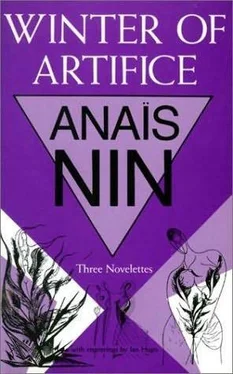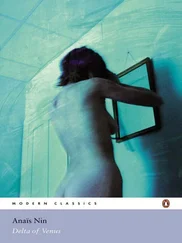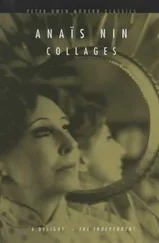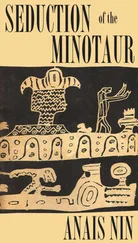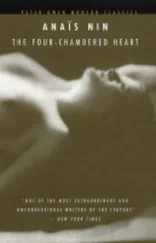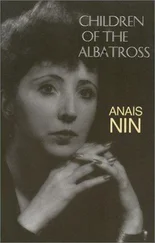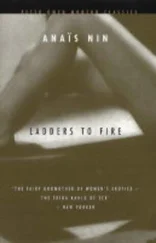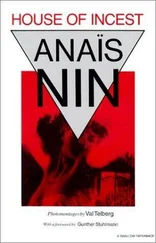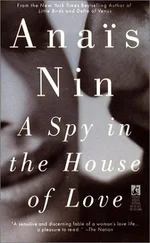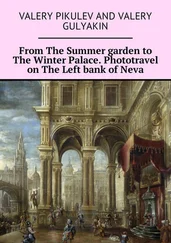Anaïs Nin - The Winter of Artifice
Здесь есть возможность читать онлайн «Anaïs Nin - The Winter of Artifice» весь текст электронной книги совершенно бесплатно (целиком полную версию без сокращений). В некоторых случаях можно слушать аудио, скачать через торрент в формате fb2 и присутствует краткое содержание. Год выпуска: 2007, Издательство: Sky Blue Press, Жанр: Классическая проза, на английском языке. Описание произведения, (предисловие) а так же отзывы посетителей доступны на портале библиотеки ЛибКат.
- Название:The Winter of Artifice
- Автор:
- Издательство:Sky Blue Press
- Жанр:
- Год:2007
- ISBN:нет данных
- Рейтинг книги:4 / 5. Голосов: 1
-
Избранное:Добавить в избранное
- Отзывы:
-
Ваша оценка:
- 80
- 1
- 2
- 3
- 4
- 5
The Winter of Artifice: краткое содержание, описание и аннотация
Предлагаем к чтению аннотацию, описание, краткое содержание или предисловие (зависит от того, что написал сам автор книги «The Winter of Artifice»). Если вы не нашли необходимую информацию о книге — напишите в комментариях, мы постараемся отыскать её.
“A handful of perfectly fold fables, and prose which is so daringly elaborate, so accurately timed… using words as magnificently colorful, evocative and imagist as any plastic combination on canvas but as mysteriously idiosyncratic as any abstract.”
—
The Winter of Artifice — читать онлайн бесплатно полную книгу (весь текст) целиком
Ниже представлен текст книги, разбитый по страницам. Система сохранения места последней прочитанной страницы, позволяет с удобством читать онлайн бесплатно книгу «The Winter of Artifice», без необходимости каждый раз заново искать на чём Вы остановились. Поставьте закладку, и сможете в любой момент перейти на страницу, на которой закончили чтение.
Интервал:
Закладка:
Despite these issues, Nin seemed most dissatisfied with the 1939 text because it does not fully represent her own writing. She explains this concern to Felix Pollak: “When I wrote this book I was too much under the influence of Henry Miller’s writing and his revisions of my work (I was just beginning to write)” (Nin and Pollak 1998, 7). [6]
Anyone wishing to understand how extensively Miller edited Nin’s writing of The Winter of Artifice could do so by examining his comments on two facsimile typescript pages of “Djuna” published in Anaïs: An International Journal (Harms 1986, 114-15). [7]The revised version of these pages appears on pages 54-55 in the 1939 edition. Miller takes seriously his task of improving Nin’s prose, which Nin acknowledges was then weak because French, not English, was her original language (Nin 1987, 93). In concentrating on style, idiom, and diction, he forces her to address aspects of writing that did not particularly trouble her when writing in her diary, the written source of the characters and events in “Djuna.” He addresses the issue directly: “Take out all the inflation and leave the hard, bare rock of concrete reality — then you get accurate poignancy. I am laying it on thick, because now you should see how certain aspects of ‘diary’ writing lead to falseaccents. Because it is a writing behind walls — without hope of criticism or of suffering the strong light of day. Get me ?” (Harms 1986, 115)
Comparing a typescript paragraph with its published version indicates the care Miller took with and the degree to which he influenced Nin’s writing. The draft version reads as follows:
There was tacked on Rab’s door a paper with his name and address carfeully printed. She asked him: Are you afarid to forget your name and who you are,and where you live? Have you not played with the idea of amnesia, which only meens a somanabulistic condition of the ideal self. The conscince goes to sleep and then the critical self too, and you can walk the streets and act as you please without calms. Its only our name, our address, and our relations which bother us, like so many memorandums of what we ought to be to correspond to their image of us. But the important thing is only to resemble our own image of ourselves. (Harms 1986, 114)
Miller corrects spacing problems and misspellings. He also comments on some of his substantive alterations and suggestions. For example, about Nin’s construction “which only means,” he states, “Bad expression ‘which is simply another way of saying, etc.’ But it needs a better transition.” Writing about Nin’s use of “calms” for “qualms,” he barks, “Look it up!!!” Regarding “memorandums,” he notes that the “plural of Latin words ending in ‘um’ is ‘a’.” Responding to the conclusion of Nin’s penultimate sentence, he comments, “Bad sentence structure.” At the end of the paragraph, he advises, “Watch all your ands, buts etc. Weakly used!”
Here is the published version of this paragraph.
There was tacked on Hans’ door a paper with his name and address carefully printed. I asked him:
“Are you afraid to forget your name and who you are and where you live? Have you ever feared amnesia, or wanted it? I have desired it because it is like an atrophy of the ideal self. The conscience goes to sleep, and therefore the critical self. You can then walk the streets and act as you please without qualms. It is only our name, our address and our relations which bind us, like so many memoranda, to the role which is expected of us. The important thing is not to perpetually resemble that fixed image of ourselves, but to create and believe in transformations.” (Nin 1939, 54)
The draft and published versions differ significantly. Most obviously, the narrator has changed from third person to first, and Rab has become Hans. [8]In addition to rethinking issues relating to narrative and character before deciding on the final text, Nin adopted some of Miller’s recommendations. Among them: “which only means” has disappeared, “memorandums” has become “memoranda,” and the penultimate sentence has been revised beneficially. She did not reduce the number of and s and but s.
Valerie Harms suggests that Miller’s “criticism [of Nin’s writing] was as merciless and exaggerated as was his own writing, and for Nin to survive it, without being destroyed, strengthened her” (Harms 1986, 113). I would not characterize as merciless Miller’s comments about this one paragraph in the “Djuna” typescript, though they are direct; nor would I call them exaggerated. Miller offers solid advice forthrightly. That Nin accepted most of his recommendations indicates her agreement with them at the time. Because the published version is superior to the draft paragraph, one can conclude that at least in this instance he influenced her writing positively. [9]
Nin later acknowledged the validity of Miller’s comment that the noncritical nature of diary writing makes unaltered diary entries inappropriate in fiction. Writing to Felix Pollak in 1955 about The Winter of Artifice , she comments, “It was my first attempt to transpose the Diary material, it was naively exaggerated” (Nin and Pollak 1998, 25). Indeed, because diary material serves as the basis for the three novellas (and because “Lilith” and “The Voice” have been published frequently since 1939, thugh in revised form), significant parts of the plots are now familiar. “Djuna” is Nin’s earliest published rendering of the now-famous interaction among Nin (Djuna), Henry Miller (Hans), and June Miller (Johanna), which Nin details more fully in The Diary of Anaïs Nin, 1931-1934 and Henry and June . [10]Events in “Lilith” are based on the reunion of Nin and her father, Joaquin Nin, as presented in The Diary of Anaïs Nin, 1931-1934 and Incest ; those in “The Voice,” on the relationship between Nin and analyst Otto Rank as depicted in The Diary of Anaïs Nin, 1931-1934 ; Incest ; and Fire .
One paragraph in “Djuna” illustrates the astuteness of Miller’s and Nin’s comments about Nin’s use of diary material in fiction. As Nin’s passion and love for June develop in the diary published as Henry and June — now probably the published text most contemporaneous with the event — the author learns that June likes wearing sandals but cannot afford them. [11]In an entry dated January 1932, Nin decides to buy her a pair:
We went to the sandal shop. In the shop the ugly woman who waited on us hated us and our visible happiness. I held June’s hand firmly. I commandeered the shop. I was the man. I was firm, hard, willful with the shopkeepers. When they mentioned the broadness of June’s feet, I scolded them. June could not understand their French, but she could see they were nasty. I said to her, “When people are nasty to you I feel like getting down on my knees before you.” (Nin 1986, 24-25)
In “Djuna,” the paragraph reads as follows:
We went to the shoe shop. There the ugly woman who waited on us hated us and our visible joy. I held Johanna’s hand firmly and commanded. I was firm, wilful with the shopkeeper. Give me this, the best — don’t you see, it’s for Johanna? The best then, the very best you have. When the woman said she did not have broad enough sandals for Johanna’s foot, I scolded her. And then to Johanna: “When people are nasty to you I feel like getting down on my knees before you. I love you, Johanna.” (Nin 1939, 72)
Nin crafted this fictional scene out of diary material that presumably reflects an actual event. She retained the development and much of the wording of the “original” material, but refined it for publication in 1939. The fictional version seems generally superior to the nonfictional one.
Читать дальшеИнтервал:
Закладка:
Похожие книги на «The Winter of Artifice»
Представляем Вашему вниманию похожие книги на «The Winter of Artifice» списком для выбора. Мы отобрали схожую по названию и смыслу литературу в надежде предоставить читателям больше вариантов отыскать новые, интересные, ещё непрочитанные произведения.
Обсуждение, отзывы о книге «The Winter of Artifice» и просто собственные мнения читателей. Оставьте ваши комментарии, напишите, что Вы думаете о произведении, его смысле или главных героях. Укажите что конкретно понравилось, а что нет, и почему Вы так считаете.
